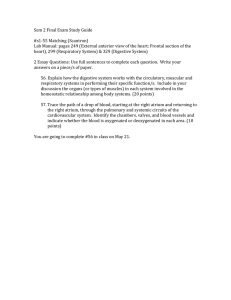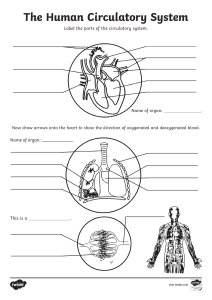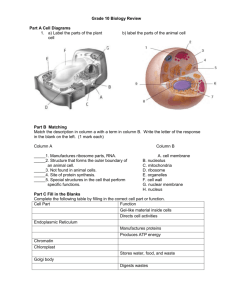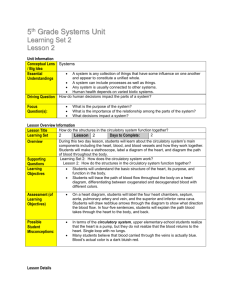Biology Exam Review: Cells, Mitosis, Systems
advertisement
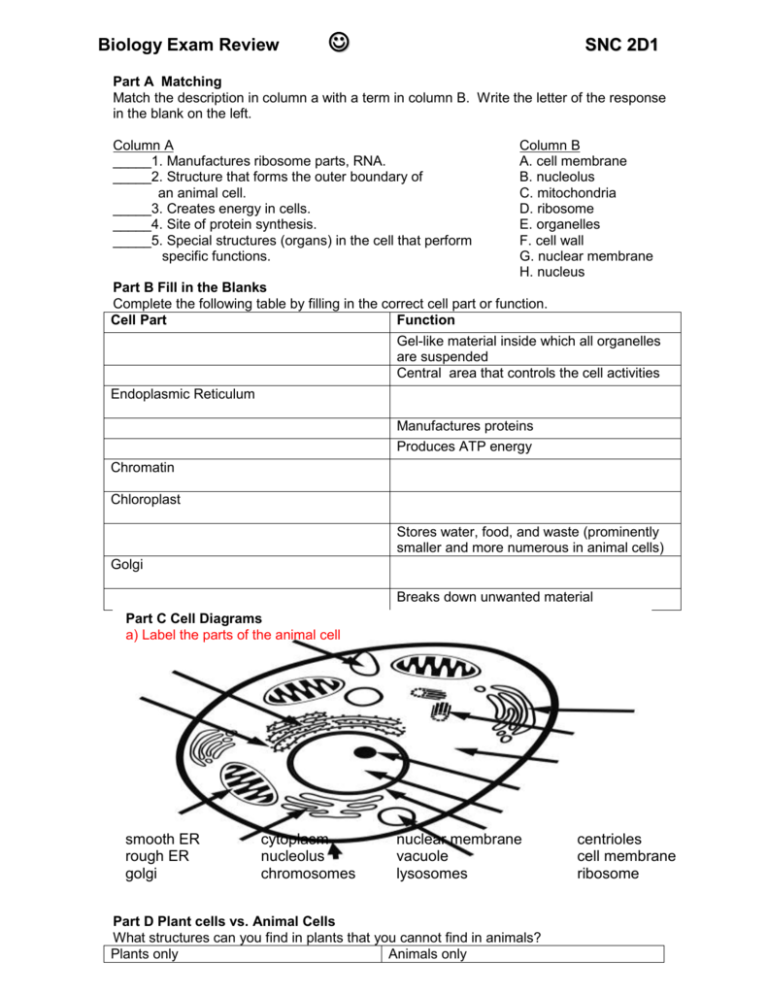
Biology Exam Review SNC 2D1 Part A Matching Match the description in column a with a term in column B. Write the letter of the response in the blank on the left. Column A _____1. Manufactures ribosome parts, RNA. _____2. Structure that forms the outer boundary of an animal cell. _____3. Creates energy in cells. _____4. Site of protein synthesis. _____5. Special structures (organs) in the cell that perform specific functions. Column B A. cell membrane B. nucleolus C. mitochondria D. ribosome E. organelles F. cell wall G. nuclear membrane H. nucleus Part B Fill in the Blanks Complete the following table by filling in the correct cell part or function. Cell Part Function Gel-like material inside which all organelles are suspended Central area that controls the cell activities Endoplasmic Reticulum Manufactures proteins Produces ATP energy Chromatin Chloroplast Stores water, food, and waste (prominently smaller and more numerous in animal cells) Golgi Breaks down unwanted material Part C Cell Diagrams a) Label the parts of the animal cell smooth ER rough ER golgi cytoplasm nucleolus chromosomes nuclear membrane vacuole lysosomes Part D Plant cells vs. Animal Cells What structures can you find in plants that you cannot find in animals? Plants only Animals only centrioles cell membrane ribosome Part E Mitosis: 1. label the phases of mitosis 2. What happens during each phase? Phase Description of what happens Interphase Prophase Metaphase Anaphase Telophase 3. Give 3 reasons why cells divide? 4. How do DNA, chromosomes, genes and protein relate to each other? 5. What is a genetic mutation and what causes a mutation in DNA? 6. What is a tumour? 7. What is cancer? Part G: Cells, Tissues, Organs and Organ Systems 1. Arrange the following terms in order from least complex to most complex: ORGAN _______ ATOM ______ TISSUE _______ CELL_______ ORGAN SYSTEM______ ORGANELLE _______ ORGANISM ______ MOLECULES ______ 2. What are the four major types of animal tissues? Give some examples of each type. Type Examples Part H: Digestive System Match the word in the word list to their function or definition Word list: esophagus, rectum, anus, K, villi, mouth, stomach, large intestine, bile, salivary glands, small intestine, pancreas Digestion begins in the __________. Teeth chew the food, saliva wets the food and the __________________ secrete salivary amylase to begin the digestion of carbohydrates. Food travels down the ________________ into the J-shaped ___________ where the following happens: Churning Acid and pepsin work to digest protein Next, food passes into the __________________ where digestion of protein, carbohydrate, and fats occurs. Food is absorbed. Tiny _________ increase the surface area for absorption. Three organs secrete substances for digestion. The liver makes digestive enzymes and _________ which is stored in and released from the gall bladder. The ____________ also releases digestive enzymes into the small intestine. The food passes into the colon or _________________ next. Here the water is absorbed. Vitamin ____ is produced. Lastly, waste is stored in the ________________ and passed out the hole called the _______________. 10. Describe the function of each organ system: a) circulatory system: b) digestive system: c) respiratory system: d) How does the human digestive system cooperate with the circulatory system? e) How does the human respiratory system cooperate with the circulatory system? Part H: Circulatory System 1.Label the following parts of the human heart on the diagram below d. pulmonary artery (to lung) a. left atrium e. right atrium b. right ventricle f. left ventricle c. pulmonary vein (from lung) LUNG OXGYENATED BLOOD TO UPPER BODY LUNG DEOXYGENATED BLOOOD FROM UPPER BODY► DEOXYGENATED BLOOOD FROM LOWER BODY► 2.Human Circulatory System: Starting from vein carrying deoxygenated blood from body, trace the flow of blood through the heart and body by numbering the following in the correct order. a) b) c) d) e) f) g) ____ right atrium ____ left atrium ____ lungs ____ right ventricle ____ left ventricle 1 vein (carrying deoxgenated blood frombody cells) ____ artery(carrying oxygenated blood to bodycells) For questions 1-3, fill in the name of the blood vessel. ____________ 1. vessels which carry blood away from the heart. ____________ 2. vessels which carry blood toward the heart. ____________ 3. tiny blood vessels with walls that are only one-cell thick through which gas exchange (carbon dioxide and oxygen) occurs with tissues. For questions 4-5, fill in the letter of the part. ____________ 4. upper chambers of the heart that receives blood. ____________ 5. lower chambers that pump blood out of the heart.
